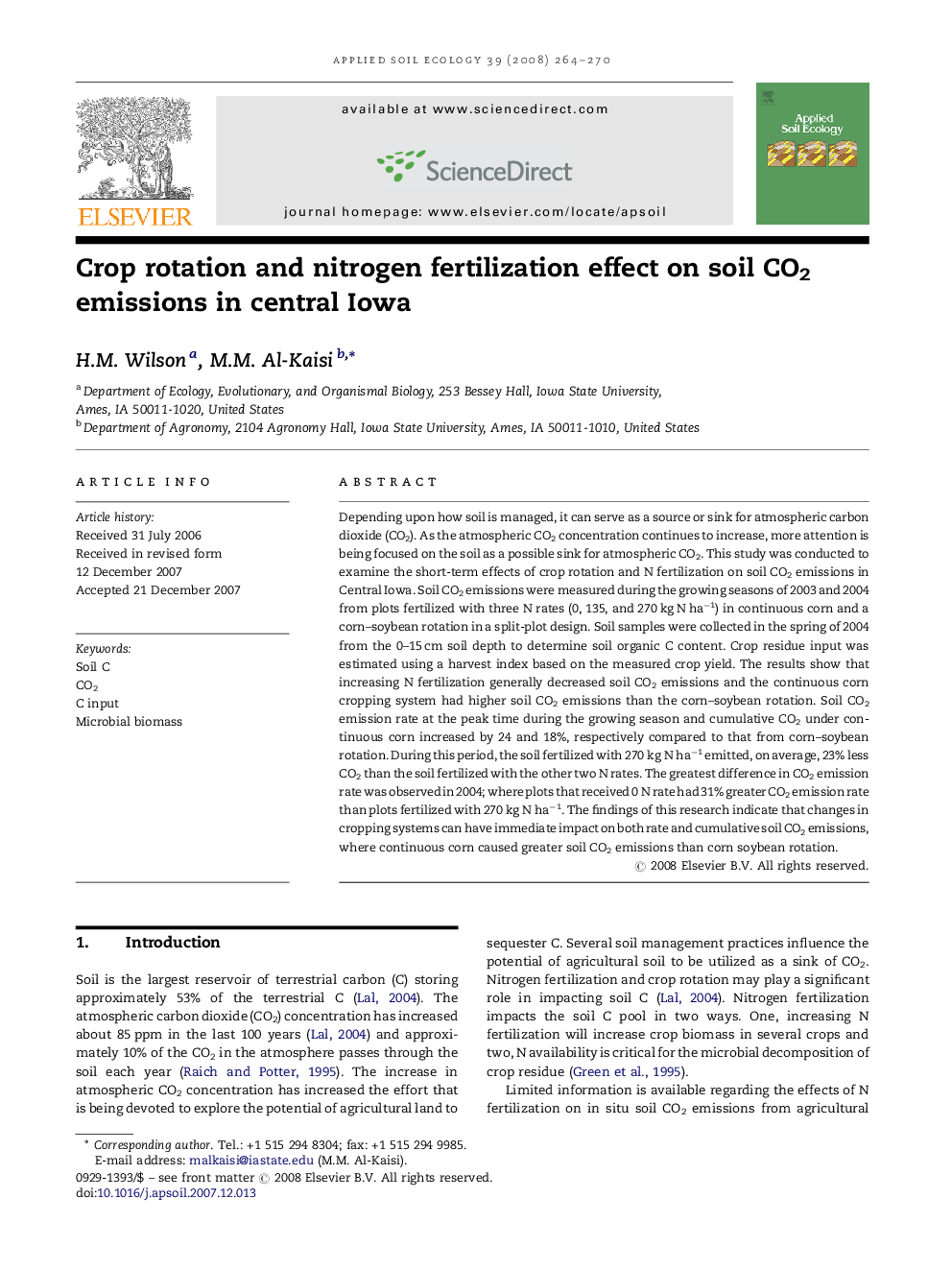| Article ID | Journal | Published Year | Pages | File Type |
|---|---|---|---|---|
| 4383175 | Applied Soil Ecology | 2008 | 7 Pages |
Abstract
Depending upon how soil is managed, it can serve as a source or sink for atmospheric carbon dioxide (CO2). As the atmospheric CO2 concentration continues to increase, more attention is being focused on the soil as a possible sink for atmospheric CO2. This study was conducted to examine the short-term effects of crop rotation and N fertilization on soil CO2 emissions in Central Iowa. Soil CO2 emissions were measured during the growing seasons of 2003 and 2004 from plots fertilized with three N rates (0, 135, and 270 kg N haâ1) in continuous corn and a corn-soybean rotation in a split-plot design. Soil samples were collected in the spring of 2004 from the 0-15 cm soil depth to determine soil organic C content. Crop residue input was estimated using a harvest index based on the measured crop yield. The results show that increasing N fertilization generally decreased soil CO2 emissions and the continuous corn cropping system had higher soil CO2 emissions than the corn-soybean rotation. Soil CO2 emission rate at the peak time during the growing season and cumulative CO2 under continuous corn increased by 24 and 18%, respectively compared to that from corn-soybean rotation. During this period, the soil fertilized with 270 kg N haâ1 emitted, on average, 23% less CO2 than the soil fertilized with the other two N rates. The greatest difference in CO2 emission rate was observed in 2004; where plots that received 0 N rate had 31% greater CO2 emission rate than plots fertilized with 270 kg N haâ1. The findings of this research indicate that changes in cropping systems can have immediate impact on both rate and cumulative soil CO2 emissions, where continuous corn caused greater soil CO2 emissions than corn soybean rotation.
Keywords
Related Topics
Life Sciences
Agricultural and Biological Sciences
Ecology, Evolution, Behavior and Systematics
Authors
H.M. Wilson, M.M. Al-Kaisi,
